Search
Remove Ads
Advertisement
Summary 
Loading AI-generated summary based on World History Encyclopedia articles ...
Search Results
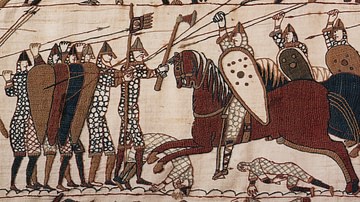
Definition
Battle of Hastings
The Battle of Hastings in south-east England on 14 October 1066 saw the defeat of the Anglo-Saxon king Harold II (r. Jan-Oct 1066) by the invading Norman army led by William, Duke of Normandy (reigned from 1035). After a day of heavy fighting...
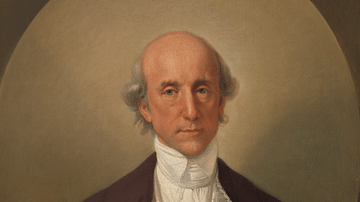
Definition
Warren Hastings
Warren Hastings (1732-1818) was appointed the Governor of Bengal by the British East India Company (EIC) in 1772 and became its first Governor-General in India from 1774 to 1785. Under his tenure, the EIC ruthlessly expanded its territory...

Image
Battle of Hastings, Bayeux Tapestry
A scene from the 11th century CE Bayeux Tapestry showing Norman cavalry charging Anglo-Saxon infantry at the Battle of Hastings in 1066 CE. (Centre Guillaume le Conquérant, Bayeux, France)

Image
Bayeux Tapestry: Detail from Battle of Hastings
This detail from Bayeux Tapestry depicts Bishop Odo of Bayeux, half-brother of William the Conqueror, rallying the troops at the Battle of Hastings. The tapestry is believed to date to the eleventh century CE. As can be seen, the artifact...

Definition
Norman Conquest of England
The Norman Conquest of England (1066-71) was led by William the Conqueror who defeated King Harold II at the Battle of Hastings in 1066. The Anglo-Saxon elite lost power as William redistributed land to his fellow Normans. Crowned William...

Video
The Battle of Hastings 1066 - The Normans - BBC Two
SUBSCRIBE to the OFFICIAL BBC YouTube channel: https://bit.ly/2IXqEIn LAUNCH BBC iPlayer to access Live TV and Box Sets: https://bbc.in/2J18jYJ More about this programme: http://www.bbc.co.uk/programmes/b00schjq Professor Robert Bartlett...
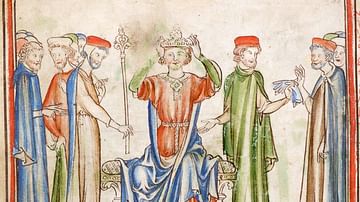
Definition
Harold Godwinson
Harold Godwinson (also spelt Godwineson) reigned briefly as King Harold II of England from January to October 1066 CE, the momentous year which witnessed the Norman conquest and end of 500 years of Anglo-Saxon rule. Harold had been, as the...
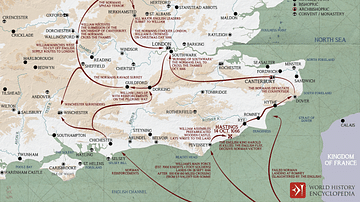
Article
William the Conqueror's March on London
William the Conqueror (r. 1066-1087 CE) was victorious at the Battle of Hastings in October 1066 CE, and Harold Godwinson, King Harold II of England (r. Jan - Oct 1066 CE) was dead. The English throne and kingdom were there for the taking...

Article
The Impact of the Norman Conquest of England
The Norman conquest of England, led by William the Conqueror (r. 1066-1087 CE) was achieved over a five-year period from 1066 CE to 1071 CE. Hard-fought battles, castle building, land redistribution, and scorched earth tactics ensured that...
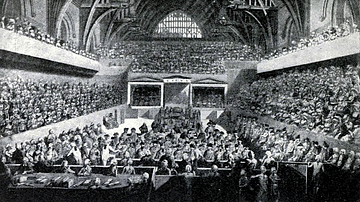
Image
The Trial of Warren Hastings
An illustration of the public trial of Warren Hastings (1732 - 1818) in Westminster Hall from 1787. Hastings was a colonial administrator and the first Governor-General of the East India Company. He was impeached by Parliament for corruption...